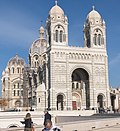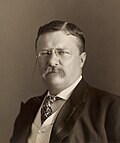Search results
Appearance
There is a page named "List of Byzantine composers" on Wikipedia
- of Byzantine composers. Composers of sacred music, especially hymns and chants, are generally well documented throughout the history of Byzantine music...29 KB (1,864 words) - 17:50, 2 May 2024
- Byzantine scholars in the Renaissance)The migration waves of Byzantine Greek scholars and émigrés in the period following the end of the Byzantine Empire in 1453 is considered by many scholars...22 KB (2,554 words) - 21:53, 24 June 2024Harmonikai was one of them. Today, chanters of the Christian Orthodox churches identify with the heritage of Byzantine music whose earliest composers are remembered...182 KB (20,605 words) - 07:14, 16 June 2024
- Byzantine emperor Leo VI)ho Sophós, 19 September 866 – 11 May 912), was Byzantine Emperor from 886 to 912. The second ruler of the Macedonian dynasty (although his parentage is...24 KB (2,321 words) - 15:49, 23 June 2024A composer is a person who writes music. The term is especially used to indicate composers of Western classical music, or those who are composers by occupation...24 KB (2,912 words) - 05:12, 23 May 2024
- Byzantine missionary to the Slavs. He, together with his brother Methodius, created an alphabet called the Glagolitic alphabet to serve the needs of the...2 KB (241 words) - 12:51, 24 July 2023
- one of the most famous Serbian composers and music educators of the nineteenth century. Ivan Moody - British composer, conductor and Orthodox priest....32 KB (3,364 words) - 11:31, 24 April 2024
- The music of Greece is as diverse and celebrated as its history. Greek music separates into two parts: Greek traditional music and Byzantine music. These...56 KB (5,694 words) - 22:52, 30 June 2024
- Bishop of the Eparchy of Piana degli Albanesi, a diocese of the Italo-Albanian Catholic Church in Sicily, Italy Nikollë Filja – Arbëreshë Byzantine rite...21 KB (1,884 words) - 16:48, 25 June 2024
- Marseille Cathedral (category Byzantine Revival architecture in France)cathedral, the "Nouvelle Major", was built on an enormous scale in the Byzantine and Roman Revival styles. The foundation stone was laid by Emperor Napoleon...5 KB (382 words) - 23:36, 29 May 2024
- Theodore (given name) (category Given names of Greek language origin)Archbishop of Canterbury Theodore (brother of Heraclius) (fl. c. 610–636), Byzantine general Theodore Trithyrius (died 636), Byzantine treasurer and...16 KB (1,153 words) - 03:04, 10 June 2024
- fairs List of Renaissance figures Byzantine scholars in the Renaissance List of Renaissance composers List of English Renaissance composers List of Flemish...15 KB (1,267 words) - 15:11, 12 April 2024
- prominent figure, often for religious or political reasons. List of assassinations List of people who survived assassination attempts World Almanac 2004...107 KB (1,058 words) - 08:43, 2 July 2024
- This is a list of notable Armenians. List of Armenian monarchs List of Armenian merchants Americas List of Armenian Americans List of Armenian Canadians...49 KB (5,269 words) - 17:13, 2 July 2024
- 1911 Encyclopædia Britannica/Greek Literature (redirect from 1911 Encyclopædia Britannica/Byzantine Literature)LITERATURE.—The literature of the Greek language is broadly divisible into three main sections: (1) Ancient, (2) Byzantine, (3) Modern. These are dealt
- Fluxus is an international network of artists, composers and designers noted for blending different artistic media and disciplines in the 1960s. The Fluxus
- who left linguistic traces in the early Russian dialects the people of the Byzantine Empire (especially Greeks) with whom the early Russians maintained







